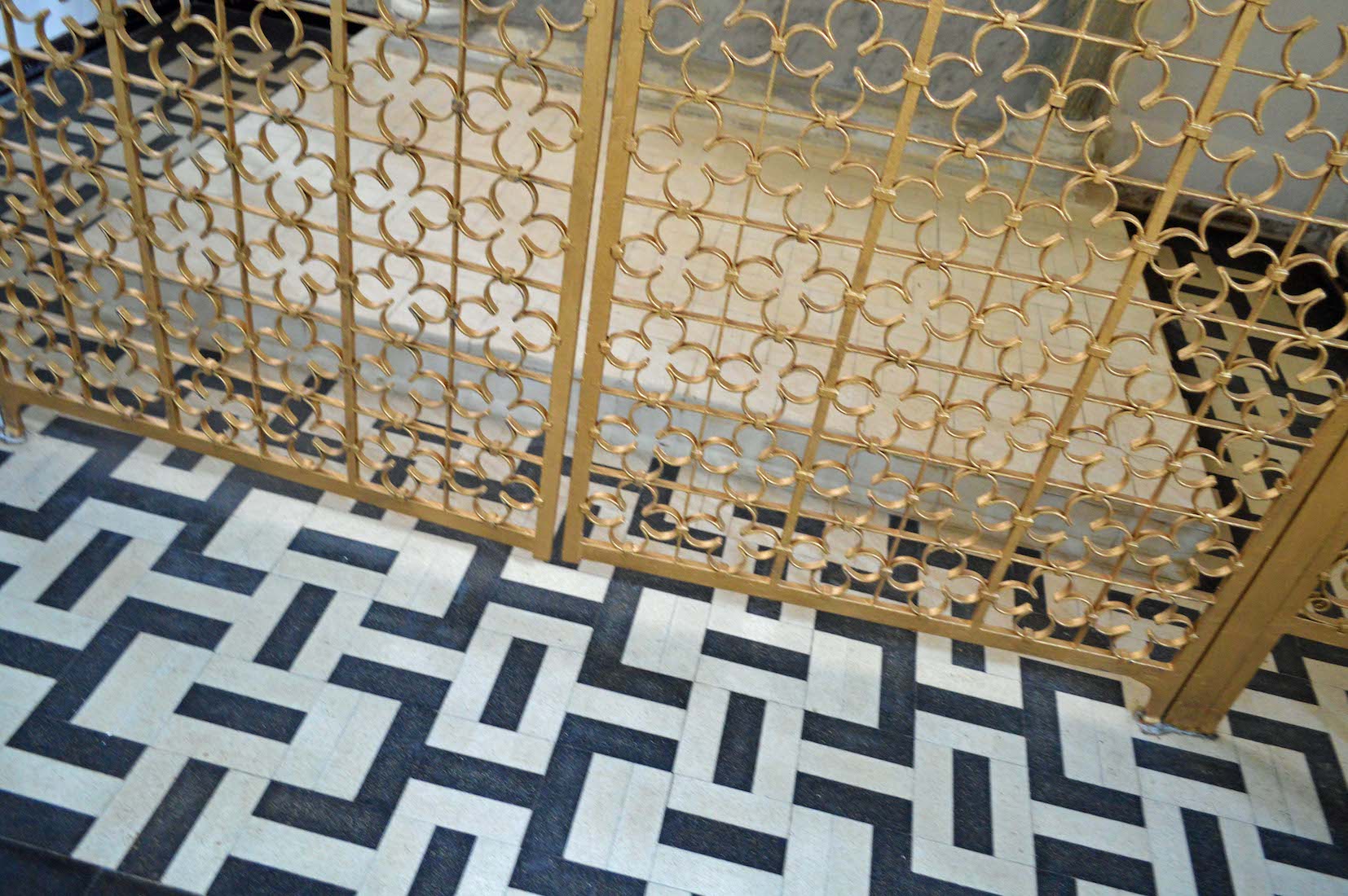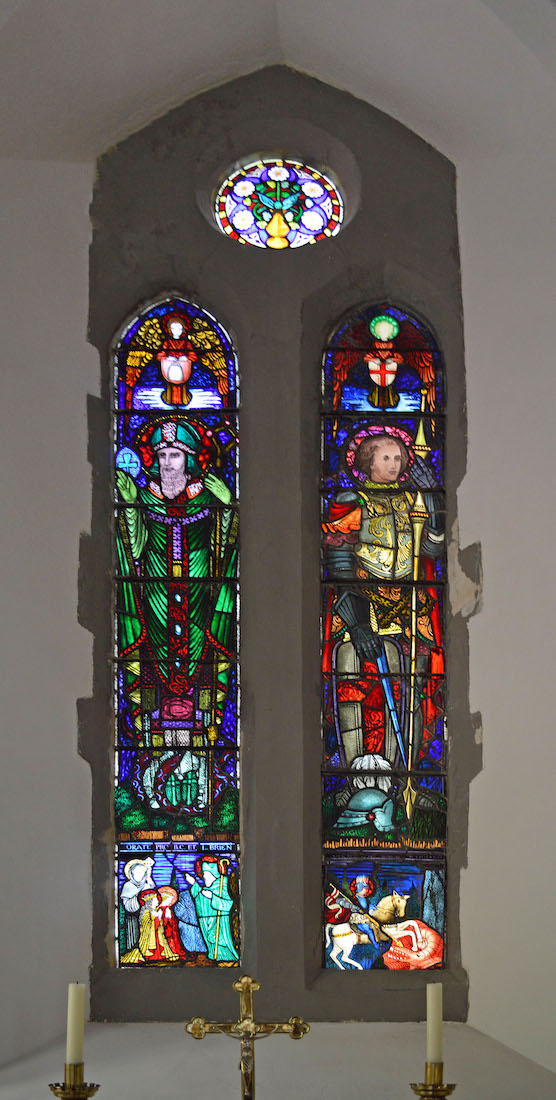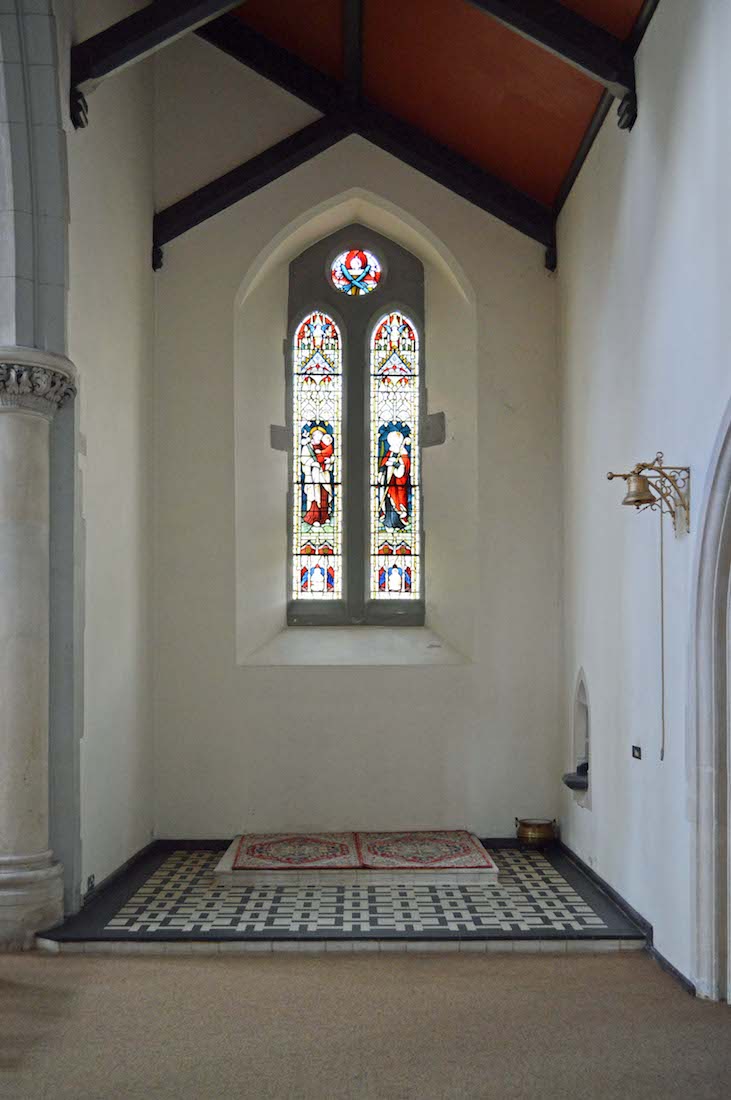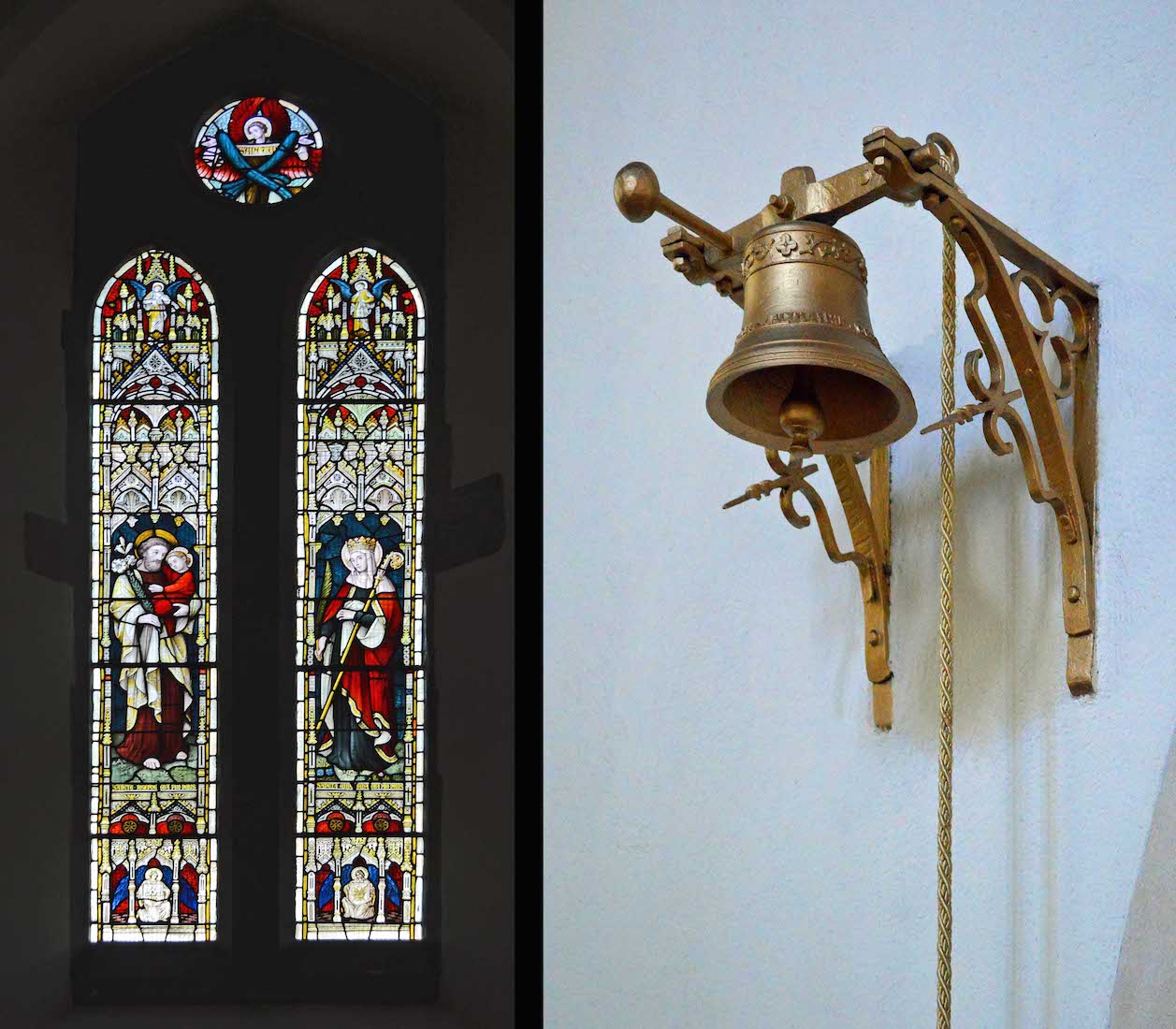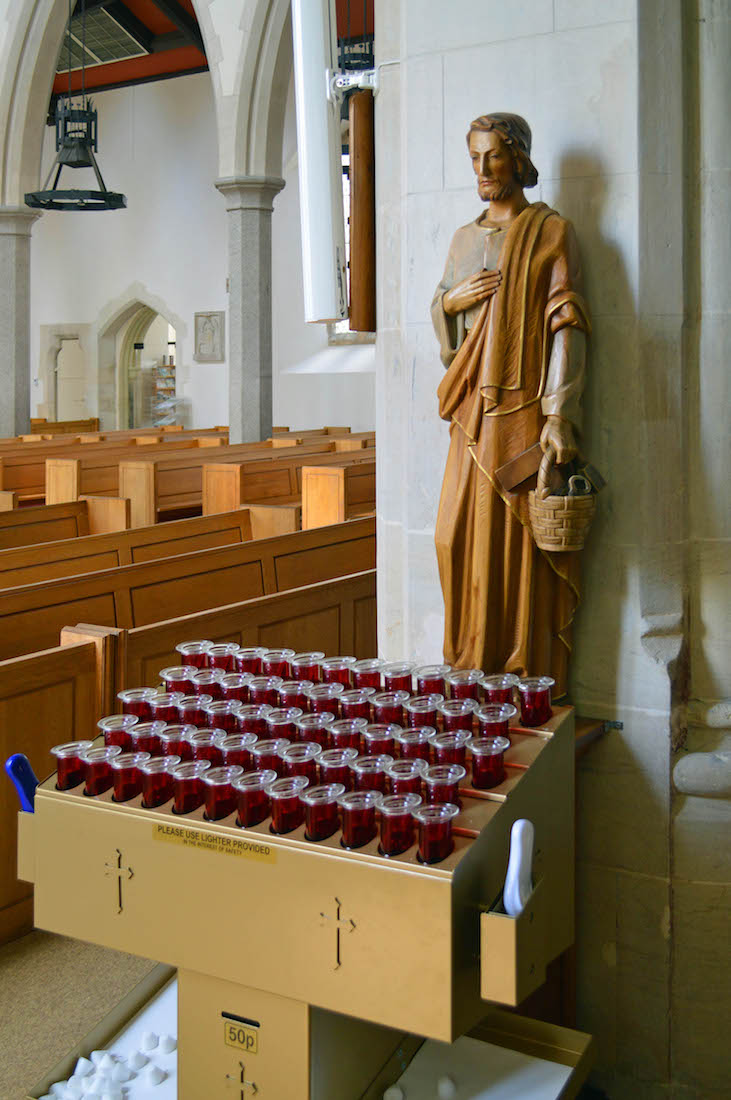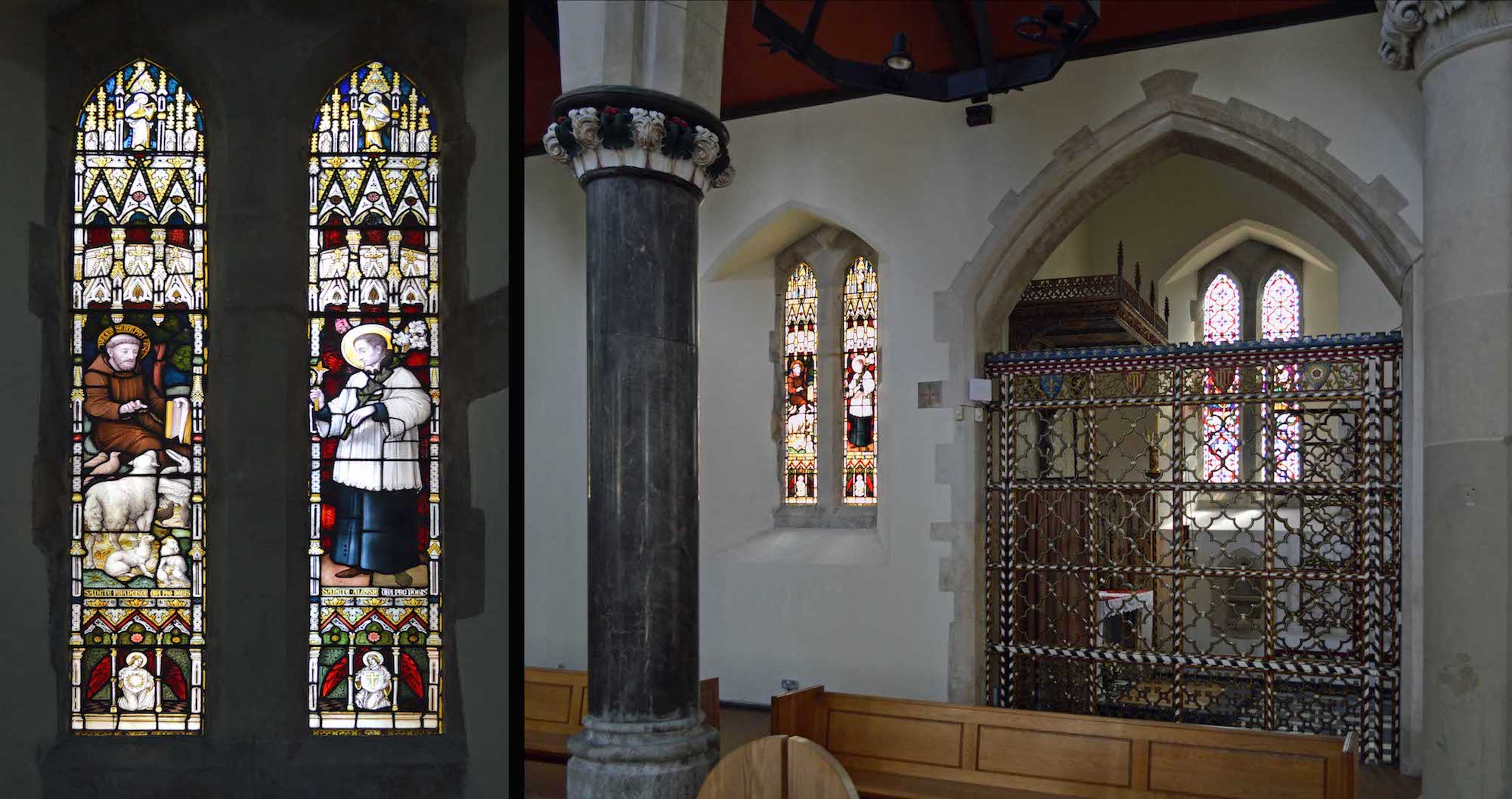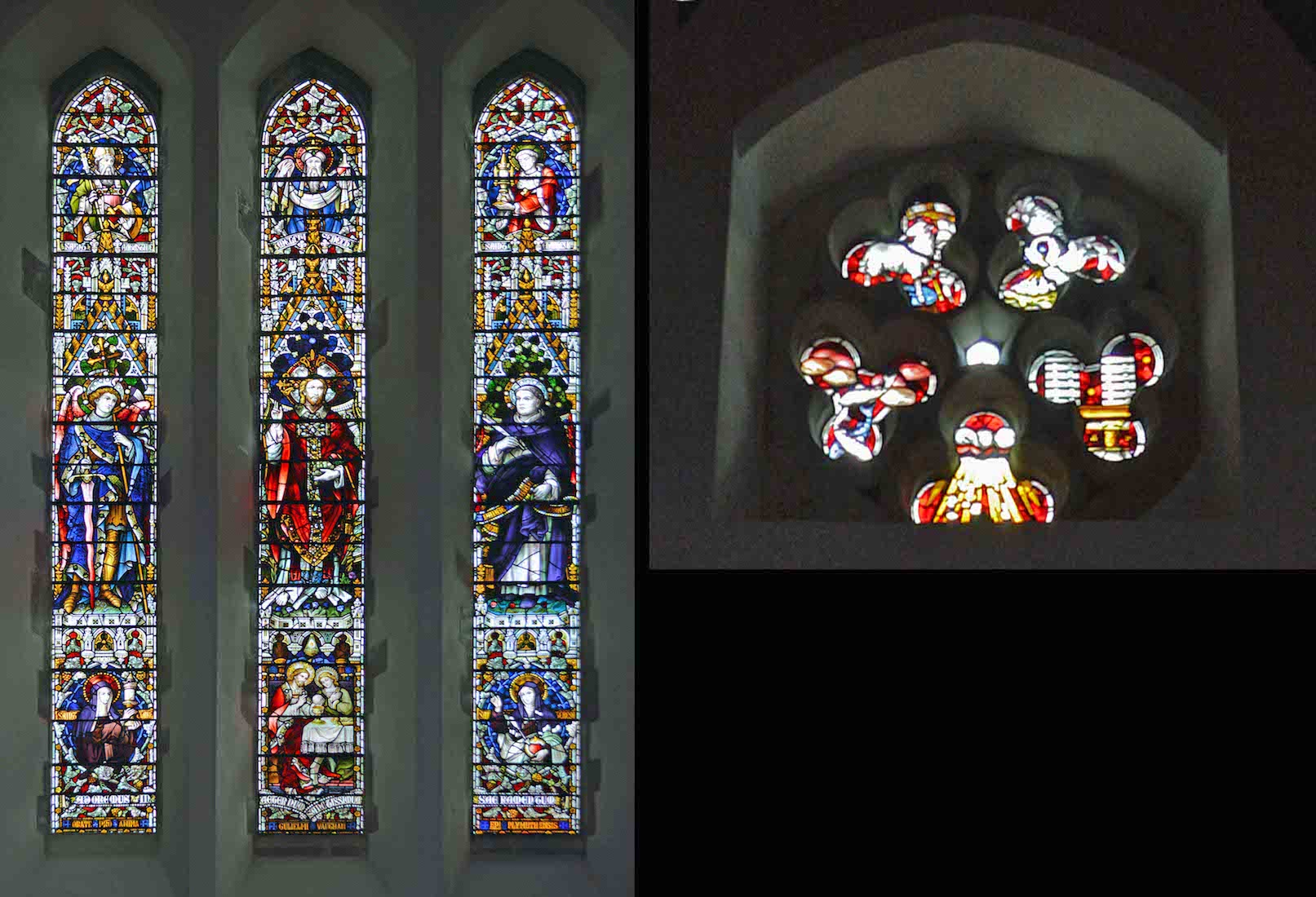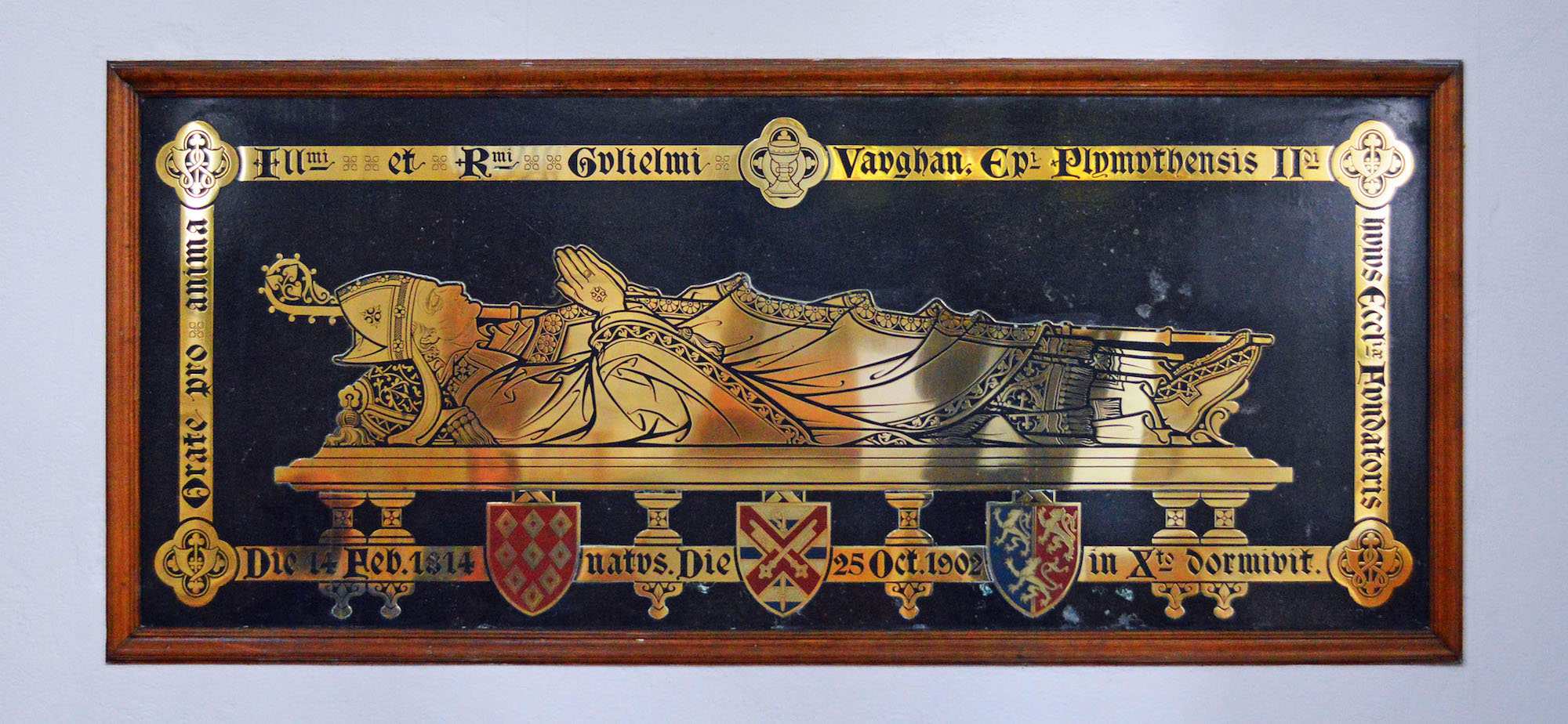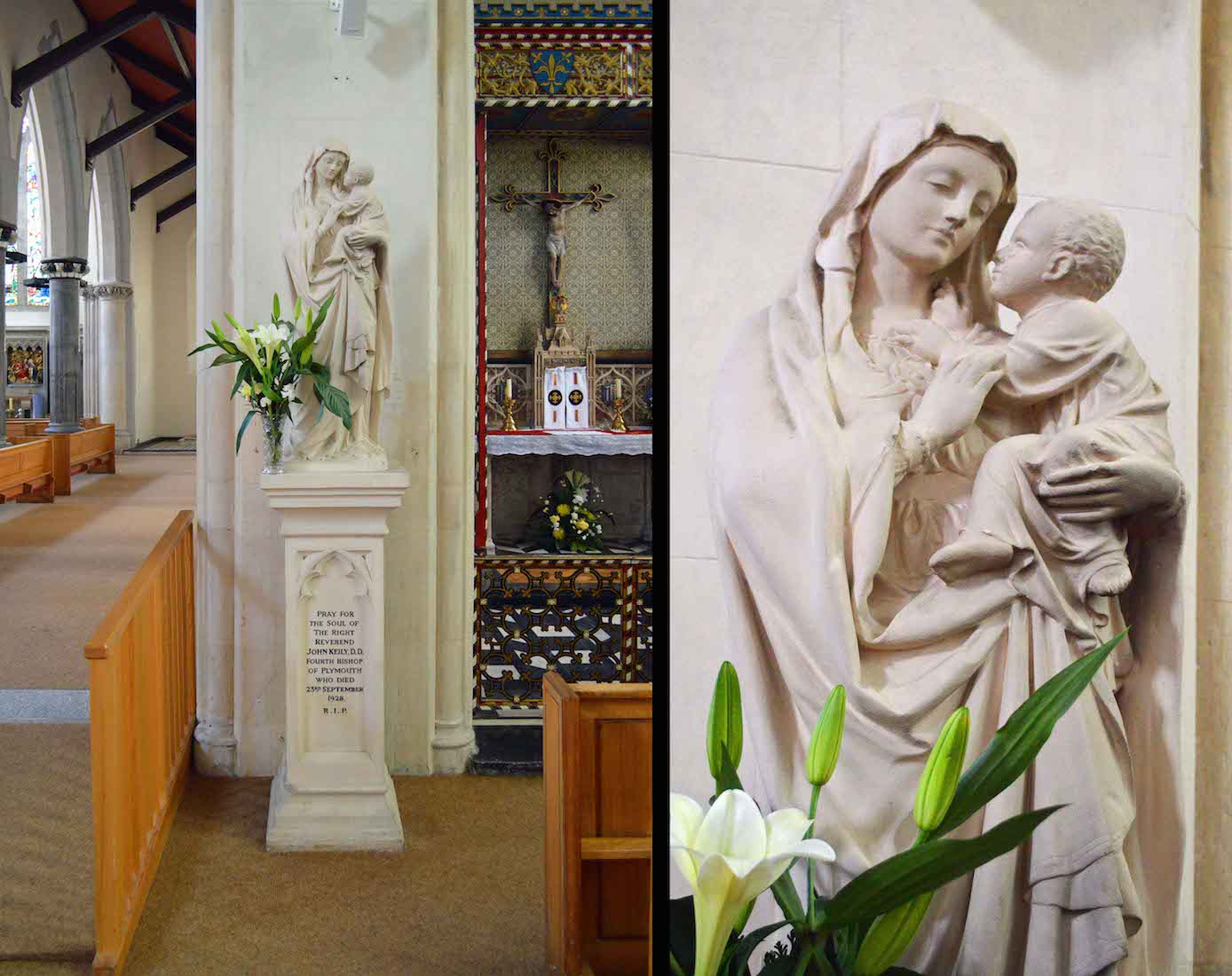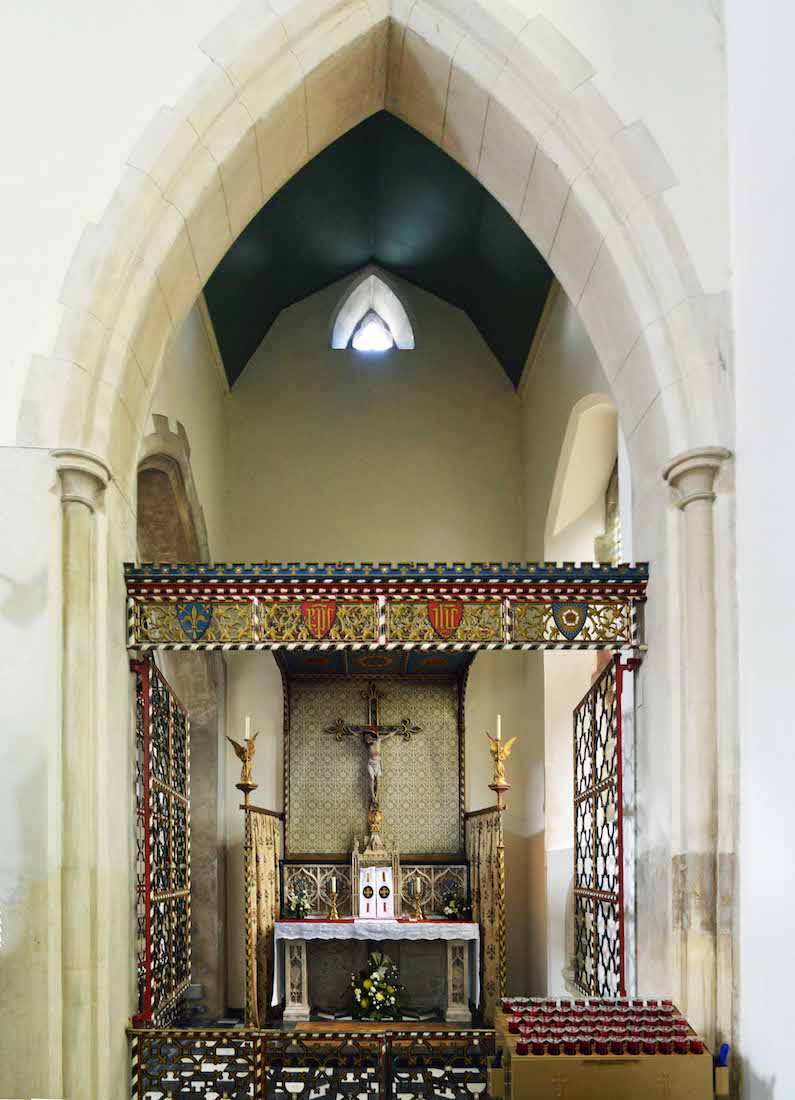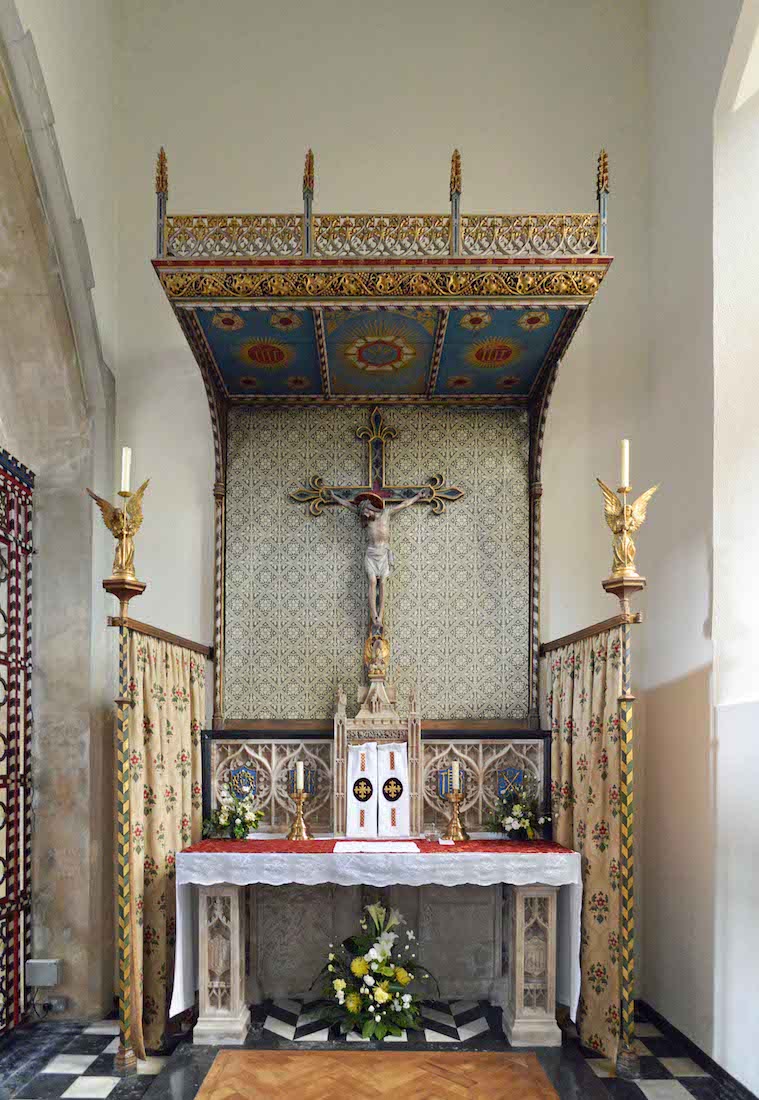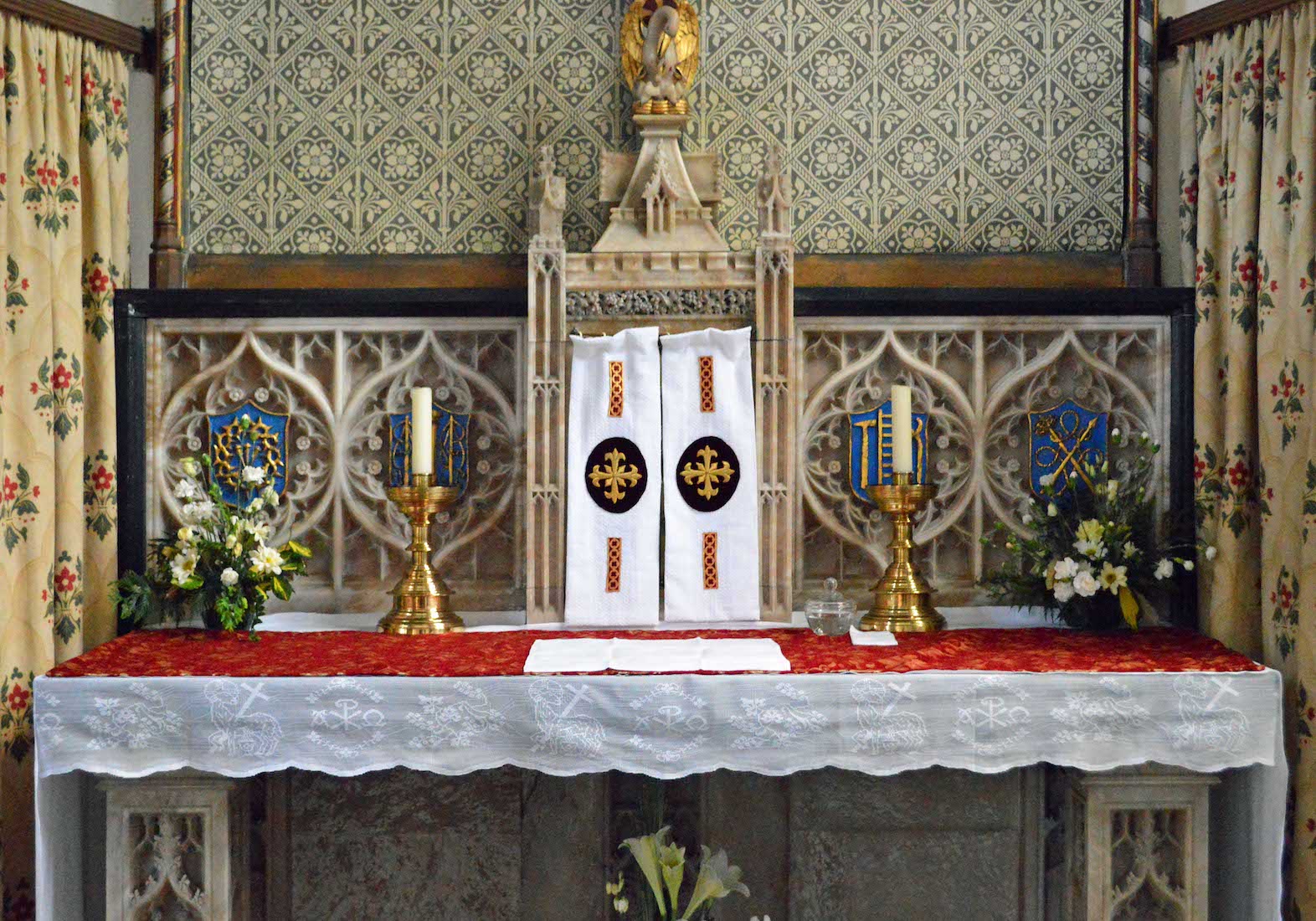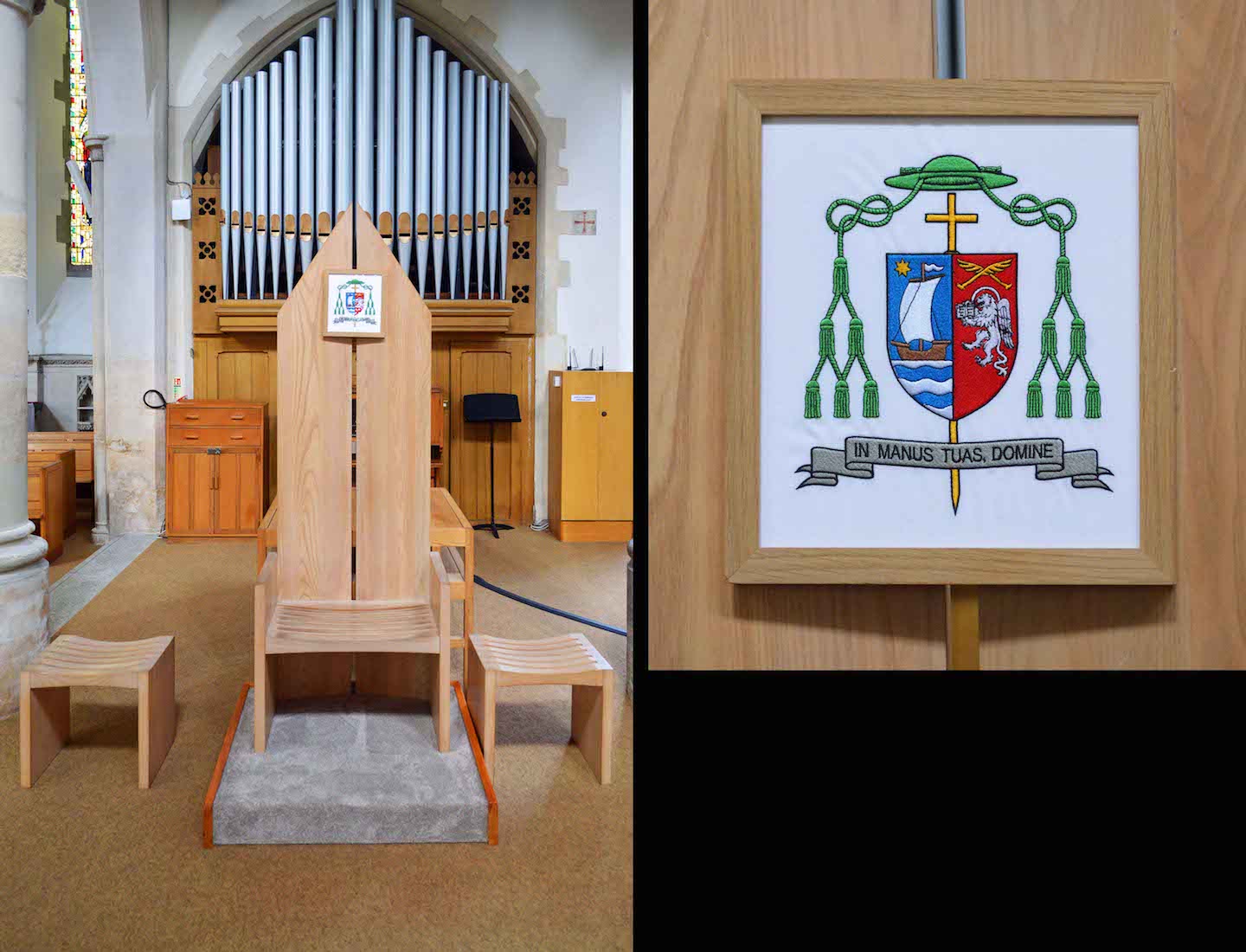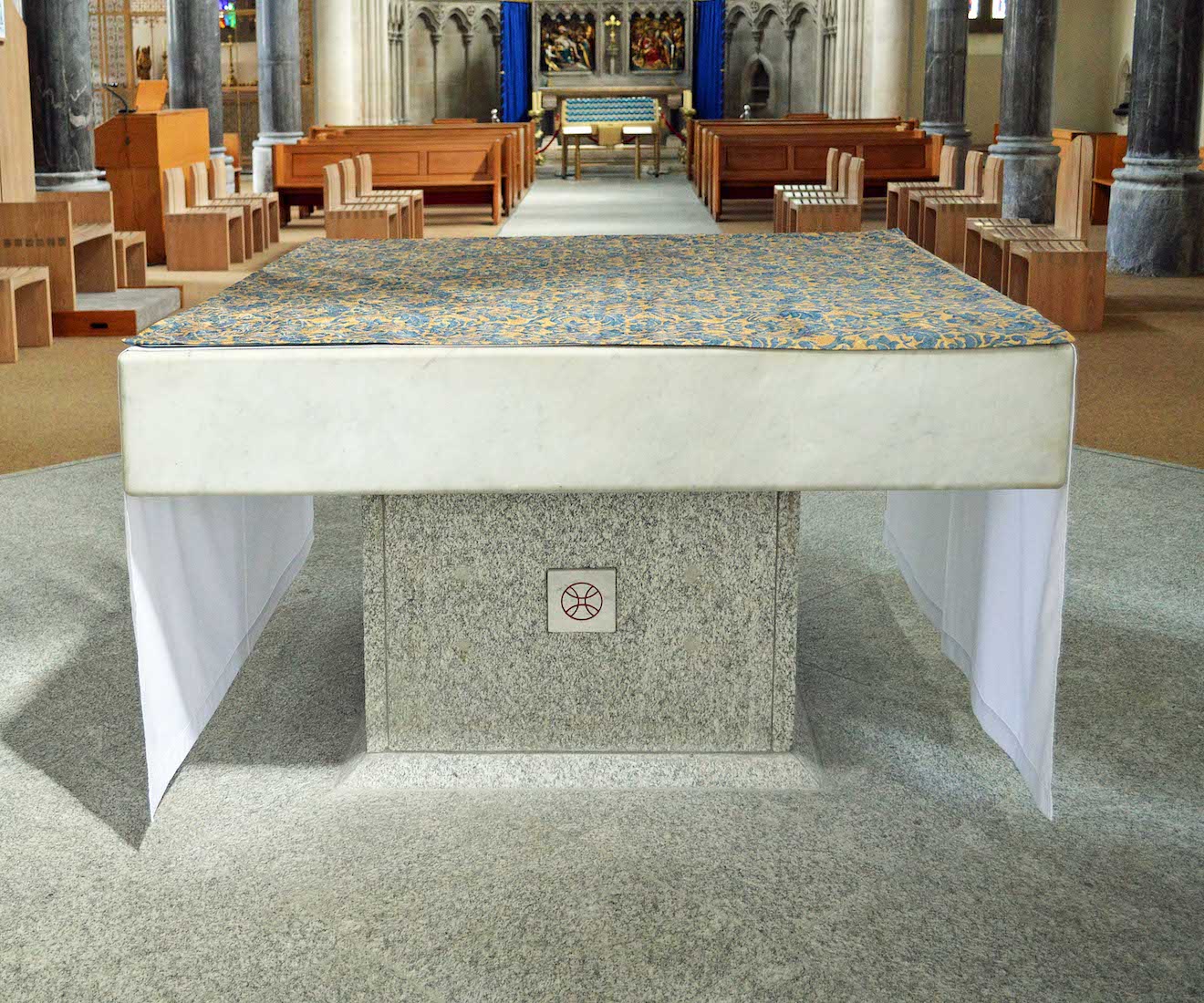42. CHAPEL PLAQUE
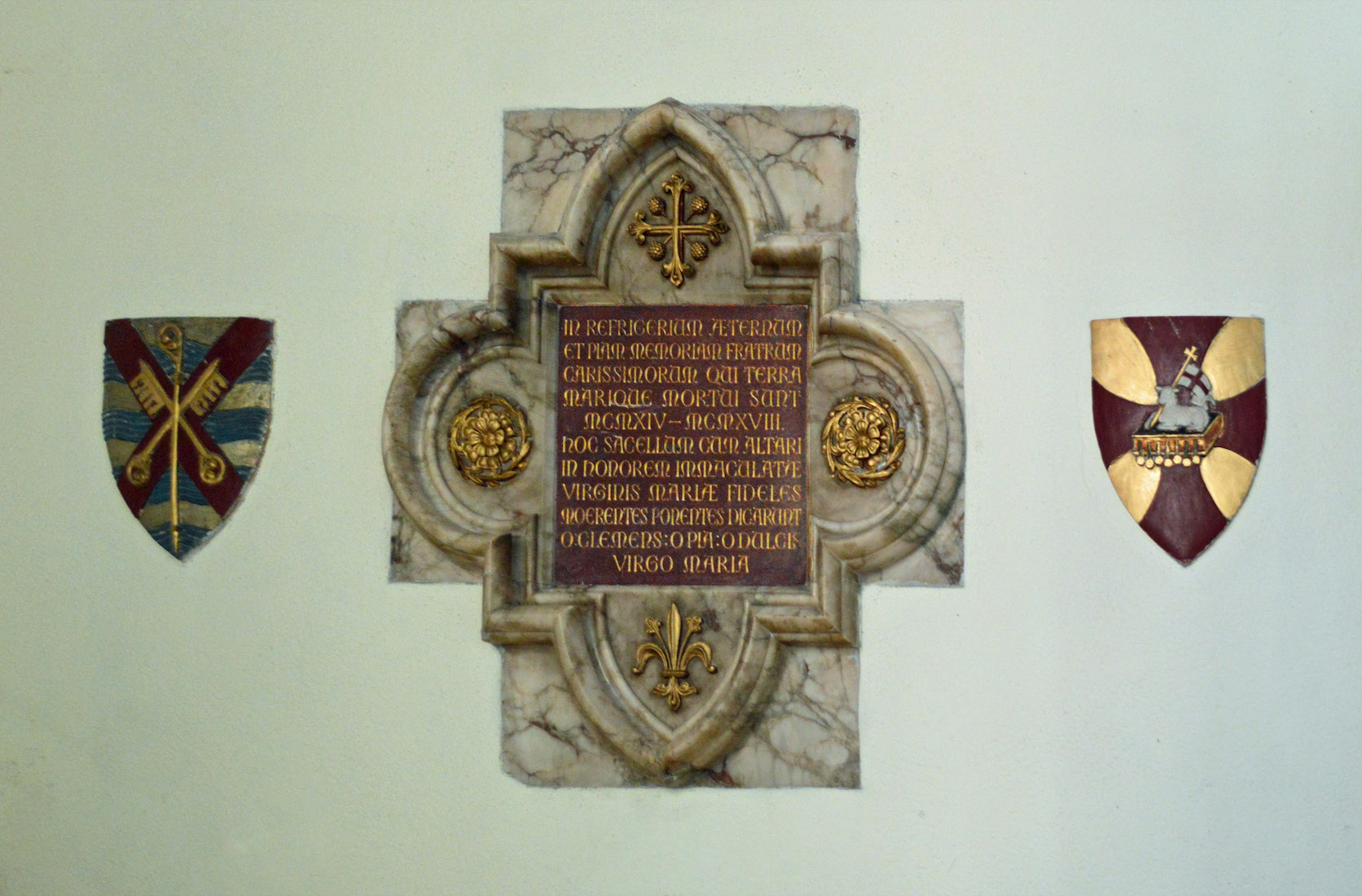
This plaque with accompanying shields is on the South (right) wall of the chapel. A loose translation of the Latin text is: Forever remembered and in loving memory of those who died on land and at sea 1914–1918. This chapel altar is in honour of the spotless and faithful Virgin Mary – merciful, loving, sweet – who sadly remembers them and their dedication.
43. CHAPEL WINDOW
The window in the East wall of this chapel, behind the altar, depicts two saints. At left is St Patrick, predominantly dressed in green with a clover at hand, and snakes underfoot. At right is St George, dressed in his armour and killing the dragon, and with the English flag.
44. CHAPEL ALTAR
This chapel appears to have no overall theme. On the shelf below the window stands a cross, four candles, and two worshipping angels, each carrying a banner with ‘Sanctus, Sanctus’ written on it.
45. SOUTHEAST CHAPEL
We leave the Northeast chapel and move across to the Southeast corner where there is another chapel. This little chapel has a distinctly unfinished appearance. The floor has the black and white tiling in a pattern we have seen before; there is also a raised concrete stand for an altar, but no altar. In the corner is a brass pot, and an alcove which might be used as an aumbry? The window is interesting, and there is a sanctuary bell at right in the foreground.
46. CHAPEL WINDOW AND SANCTUARY BELL
The window has two panels. One shows St Jospeh holding the Child Jesus. He carries a flowering sprig in keeping with an old legend. At right is the Virgin Mary shown as Queen of Heaven. She holds a palm branch: a symbol of victory, peace and eternal life. The sanctuary bell is rung at the beginning of a service to indicate the start of service proceedings.
47. ST JOSEPH
Returning down the South ambulatory we pass this unidentified figure. Our only clue is the bag of tools with a setsquare. This fits with Joseph being a carpenter, but this is not a typical representation of Joseph who is usually depicted holding a flowering staff or holding the Christ Child. We note that James the brother of John is often depicted with a setsquare as his symbol.
48. SOUTH AMBULATORY
On the South side of this ambulatory we pass a stained glass window, and then there is a screened side view of a side chapel. The window depicts two well-known saints, St Francis and St Aloysius. Aloysius de Gonzaga was an Italian aristocrat who became a member of the Society of Jesus. While still a student at the Roman College, he died as a result of caring for the victims of a serious epidemic. He was beatified in 1605 and canonized in 1726.
50. SOUTH TRANSEPT WINDOW
The main window has three panels. At centre is the Risen Christ, with the Archangel St Michael at left, and perhaps St Luke at right. I am unable to explain the high rose window: perhaps a lamb and an angel at top?
51. SOUTH TRANSEPT BRASS PLATE
The brass plate commemorates Bishop William Vaughan. As we have already noted, William Joseph Vaughan (1814-1902) was a British clergyman who held high office in the Roman Catholic Church as the second bishop of Plymouth. This type of memorial is probably not in favour today, but this plate is remarkably clear and easy to read.
52. ST THERESA
In the right hand corner is a small statue of St Theresa of Ávila. St. Theresa was a Spanish Carmelite nun who lived in the 1500s. She was a mystic and author of spiritual writings and poems. She founded numerous convents throughout Spain and was the originator of the Carmelite Reform that restored a contemplative and austere life to the Order. There are various statues of St Theresa, but almost all show her holding a crucifix and flowers.
53. VIRGIN AND CHILD
The pews in the South transept all face East, and on the Easterly side is this statue of the Virgin and Child. A vase stands by the statue, with a beautiful white lily. The pedestal has text reading: ‘Pray for the soul of the Right Reverend John Keily, D.D. Fourth Bishop of Plymouth who died 23rd September 1928. R.I.P.’ I suspect that this transept serves as the Lady Chapel for this Cathedral.
54. BLESSED SACRAMENT CHAPEL
Leading off this transept is the Blessed Sacrament Chapel. The chapel is shallow in depth and separated from the South transept by a decorative screen with opening half-doors. A bar across the top carries four shields with religious symbols. There is a window in the right wall of the chapel.
55. CHAPEL ALTAR
Inside the chapel is an altar and a reredos with a colourful canopy. On the altar stands a tabernacle, containing Reserved Elements of the Eucahrist. Above this is a crucifix. The altar is screened at the sides by curtains, and on each side is an angel holding a candlestick.
56. CHAPEL SIDE WINDOW
The window shows St Henry at left, and St Anna (Anne), traditionally the mother of the Virgin Mary at right. St. Henry, son of Henry, Duke of Bavaria, and of Gisella, daughter of Conrad, King of Burgundy, was born in 972. Henry made numerous pious foundations, gave liberally to pious institutions and built the Cathedral of Bamberg. He died at the castle of Grone, near Halberstad, in 1024. He is the patron saint of the childless, of Dukes, of the handicapped and those rejected by Religious Orders.
57. CHAPEL CROSS AND ANGELS
This detailed view of the chapel reredos shows the crucified Christ and candle-bearing angels.
58. ALTAR AND TABERNACLE
And this is a detail of the chapel altar with the tabernacle and candles. When visiting a Roman Catholic church or cathedral, we might expect to find these three chapels: a Sacred Heart Chapel, a Lady Chapel, and a Blessed Sacrament Chapel.
59. CATHEDRA
Standing with its back to the organ is the cathedra, or bishop’s throne. The bishop has oversight of all the churches in the diocese (here the Plymouth Diocese), and his special association with (this) one of those churches is indicated by the cathedra. This is where the title ‘cathedral’ for this church comes from. The Bishop’s Crest has the words: ‘Manus Tuas Domine’ : Father, into thy hands I commend my spirit.
60. NAVE ALTAR
The nave altar is of simple solid construction. In the 1960s there was a directive from Vatican II for the Mass to be celebrated from a central altar with the priest facing the people. This means that the nave altar rather than the traditional high altar becomes the focus for a worship service.


